|
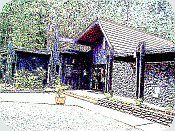 |
|
|
|
These pictures are licensed under a Creative Commons License which allows many freedoms and is explained at the bottom of the page. Please read it carefully before using any of this material.
In Snohomish county, thousands of acres of trees like what are shown in the pictures below that were 6 to 8 feet ( and larger ) in diameter and hundreds of years old were wiped out in a period of less than 50 years. For pictures of what used to be here you can look for a book that is listed here; On this web page, look for the book "The History of Snohomish County", by William Whitfield volume 1: Pioneer Historical Publishing company, Chicago Seattle 1926. CALL # = 979.734 H62. In this book you will see the pictures of the ancient trees that were destroyed. Look on these pages for pictures of the trees that used to be here: 679,697,703,711,715.
Fortunately a tiny fraction of the original old growth forest was saved along with its associated native vegetation. These pictures below are part of that. All the plants in these park pictures are native to the Pacific Northwest.
Much of the Pacific Northwest was once very similar to
what you see here as far as size of trees and contents of
forest area are concerned. However forests very
much like this one were cleared by well-meaning settlers unaware of the horrific damage they
were doing. They were unaware of the life giving qualities of forests that now provide us
with some of the cleanest water in the world, fresh air, and intrinsic beauty unequalled
anywhere in the world. The people who settled here in the last 200 years viewed the land and its contents as theirs for
the taking to use as they pleased, with no concern for any kind of sustainable living. To give the brave
people who settled this area credit; a large part of their life here was survival in a different
way than what we have today. The forest was a fearsome place where they did not know how to survive
and could not grow food. We must keep in mind the situation on the frontier back then: there were no
huge freeways, no cars, there was no radio, no electricity, no television or computers. Travel was
mainly by horseback, on foot or railway; all most certainly giving people the impression that this
land was indeed limitless. Add to this the concept of manifest destiny (Cornell University)2
(Pratt 795-798)3 (James 147-148)4 (Owsley 152-154)5 which was the attitude
of the time, and you have the cultural conditions that were the catalyst for the ecological
disaster that followed the settling of the area now called Washington state. These people were not to
blame for what they did to the forest because they were not in possession of all the facts they needed to make
appropriate decisions; and furthermore public education was in its infancy; however the native peoples that lived
here along with their cultures that were thousands of years old were forever altered in the most destructive way and
unlike their damage to the forest, the settlers were well aware of what they were doing to these people
and are fully to blame for that crime; but that is another story of a far greater destruction...
The part that is really tragic is that today we DO have all the information we need to know that clear-cutting
and uncontrolled urban sprawl will mean even more serious consequences for us all, yet we continue to deny this and the
pillage continues.... sad indeed; and WE ARE to blame for the destruction we have allowed. We have the bad
examples of the past and the knowledge of the present as reminders and guides respectively. What are we leaving
our children's children? I sincerely hope that these pictures are not all they have to remind them of what used
to be here.
Forests provide the direct benefits of clean water (Dizer 409,414)1, fresh air,
climate moderation and intrinsic value to people. There are indirect benefits that are too numerous
to mention and some are: homes for insects ( remember them - they polinate our fruits and vegetables -
without them we starve ), locations for ecosystems that directly support these insects, retention of flood water
that can ( and often does ) wash away fertile soil that grows our food ( or more trees ) and a resource for
medicine that can cure disease. Taxol (Paclitaxel) from the pacific Yew tree -
a cancer treatment is one good example. Taxol can only be obtained from these trees ( Bolsinger )6 - it cannot be synthesized;
although attempts have been made.
Yew trees only grow well in old growth forests and over 90 percent of these forests have been cut down.
If all the old growth had been destroyed along with Pacific Yews; the cure would never have been found and there would
be no substance known to attempt to synthesize. So you see its about people AND forests but we must save trees and
forests to save people.
It doesn't take a scientist to know this:
We get our very life from this earth. All our food comes directly or indirectly from the ground, and
the water we drink and the air we breathe are recycled and purified by earth's living ecosphere. This garden was given to us - we can either care for it or
destroy it. Either way, future generations will face the consequences of our actions. Right now . . . it does not look good for our children.
If you would like to comment on this topic go here
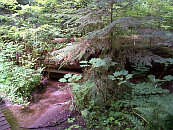
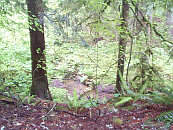
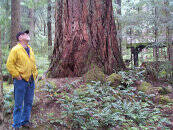


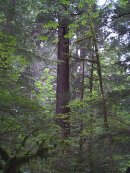
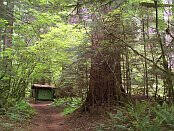
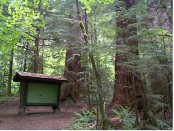
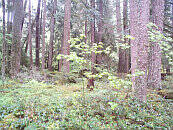
1. Dizer,H. , A Nasser, and J M Lopez Applied and Environmental Microbiology, Feb. 1984, p 409-415. Vol.47, No.2 Penetration of different human pathogenic viruses into sand columns percolated with distilled water, groundwater, or wastewater.
2. Cornell University http://www.mtholyoke.edu/acad/intrel/osulliva.htm John L. O'Sullivan on Manifest Destiny, 1839. accessed 2006-10-07. Excerpted from "The Great Nation of Futurity," The United States Democratic Review, Volume 6, Issue 23, pp. 426-430. The complete article can be found in The Making of America Series at Cornell University
3. Pratt, Julius W.. "The Origin of "Manifest Destiny" ". American Historical Review, Vol. 32, No. 4 (Jul., 1927), pp. 795-798 doi:10.2307/1837859. Accessed 2006-10-22.
4. James, Darcy. "The Continuing Impact of Manifest Destiny in a Small Town". Wicazo Sa Review, Vol. 14, No. 1, Indigenous Resistance and Persistence. (Spring, 1999), pp. 147-163. Accessed 2006-10-22.
5. Owsley, Frank Lawrence Jr.; Smith, Gene A.. "Filibusters and Expansionists: Jeffersonian Manifest Destiny, 1800-1821". Review author[s]: J. C. A. Stagg Journal of the Early Republic, Vol. 18, No. 1. (Spring, 1998), pp. 152-154. Accessed 2006-10-22.
6. Bolsinger, Charles L. and Annabelle E. Jaramillo. Taxus brevifolia Nutt. Pacific Yew. Taxaceae -- Yew family http://www.na.fs.fed.us/spfo/pubs/silvics_manual/volume_1/taxus/brevifolia.htm accessed 2006-10-04.
The following are quotes from the above article:
". . . In the late 1960's, taxol-a complex compound extracted from yew bark-was identified as a possible anticancer agent (18,48). The National Cancer Institute (NCI) has found taxol to be one of the most promising of more than 120,000 plant compounds tested for anticancer properties. Taxol appears to be effective against a wide range of tumors, and good responses have been obtained in the treatment of refractory ovarian cancer (9,38)." "Almost all the yew trees on non-Federal land are survivors of logging operations that removed the old-growth overstory (47). On Federal land where old-growth forests still exist, many more yew trees are thought to be present, but trees of the size needed to produce large quantities of bark are not abundant in most areas. An unknown but unquestionably significant percentage of the original yew resource has already been destroyed in logging. In the process of harvesting Douglas-fir and other timber species, mostly by clearcutting, yew trees were either cut or knocked over and broken up by machinery. Yew trees were seldom taken in primary logging operations, but some yew wood was later salvaged by firewood cutters and gleaners gathering wood for specialty products. Most of the yew trees that existed in logged areas were burned in slash-disposal fires. In many logged areas, the rootstocks have survived and resprouted, so, although the wood and bark of many yew trees were destroyed, there seems to have been little threat to the existence of the yew germ plasm. Continued or increased demand for yew bark for taxol production could further decrease a resource that has already been greatly reduced. Attempts to synthesize taxol in the laboratory have failed, and prospects for success in the future are considered to be poor. The only known source of taxol now is yew bark. Taxol has been found in most of the several other species of Taxus that exist, but Pacific yew is the only one that is considered to be a practical source of quantities sufficient for clinical use (9,12)."

This work is licensed under a Creative Commons Attribution-ShareAlike 2.5 License. terms of use
